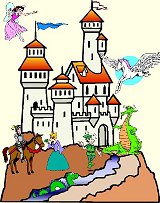|
Stuffed
Woolly
Mammoth
Museum
quality replica plush.
A classic, adorable Ice Age
mammal from the Wild Republic
Cuddlekins Collection.
|
12
Inches Long
Wild
Republic Cuddlekins
Stuffed
Plush Woolly Mammoth
KM83821
$18.50
|
|
Mammoth
-
(genus Mammuthus), any member of an extinct class of elephants
found as fossils in Pleistocene deposits over every continent except
Australia and South America (the Pleistocene epoch began 1,600,000
years ago and ended 10,000 years ago). The woolly, Northern, or
Siberian mammoth (M. primigenius) is by far the best-known of
all mammoths. The relative abundance and, at times, excellent
preservation of this species' carcasses found in the permanently
frozen ground of Siberia has provided much information about mammoths'
structure and habits. Fossil mammoth ivory was previously so abundant
that it was exported from Siberia to China and Europe from medieval
times.
Mammoths figured
significantly in the art of primitive man; cave dwellers in Europe
realistically depicted herds of these animals. Mammoths were sometimes
trapped in ice crevasses and covered over; they were frozen, and their
bodies were remarkably well preserved. In fact, cases have been
reported in which sled dogs actually were fed the meat from frozen
mammoth carcasses that had begun to thaw out of the ice that had held
them for almost 30,000 years.
A variety of distinct
species are included in the genus Mammuthus. Most mammoths were
about as large as modern elephants. The North American imperial
mammoth (M. imperator) attained a shoulder height of 4 m (14
feet). At the other extreme were certain dwarfed forms whose ancestors
became isolated on various islands. Many mammoths had a woolly,
yellowish brown undercoat about 2.5 cm (1 inch) thick beneath a
coarser outer covering of dark brown hair up to 50 cm long. Under the
extremely thick skin was a layer of insulating fat at times 8 cm
thick. The skull in Mammuthus was high and domelike. The ears,
small for an elephant, were probably adaptively advantageous for an
animal living in a cold climate; the smaller amount of exposed surface
area diminished heat losses. A mound of fat was present as a hump on
the back. This structure is lacking in fossil remains, but evidence
for its presence comes from cave paintings. The prominent tusks were
directed downward and were very long; in older males they sometimes
curved over each other. Remains of arctic plants have been found in
the digestive tracts of frozen mammoth carcasses. It is clear that the
mammoth was hunted by early North American hunters.
"mammoth" Encyclopędia Britannica
from Encyclopędia Britannica Premium Service. |

